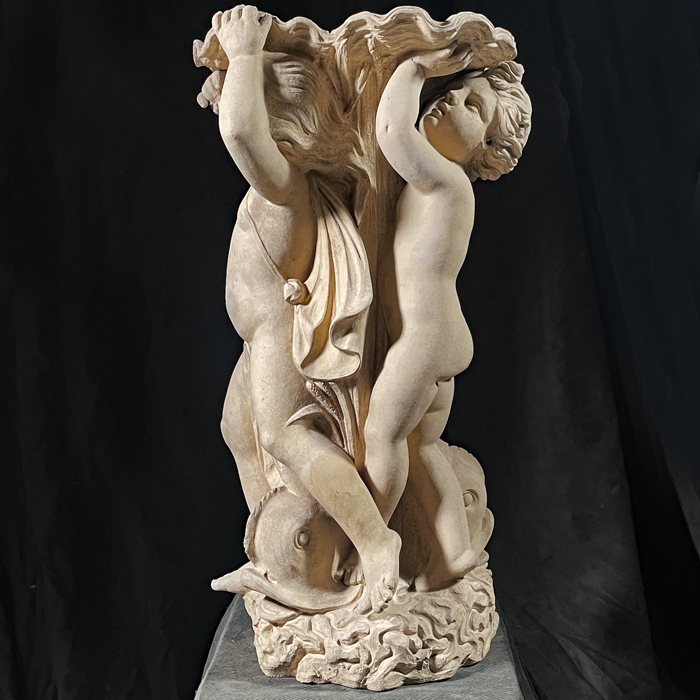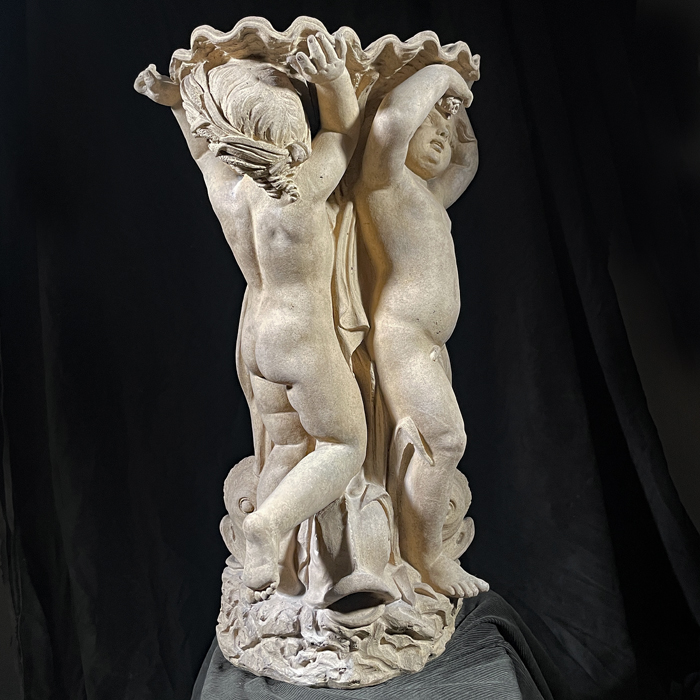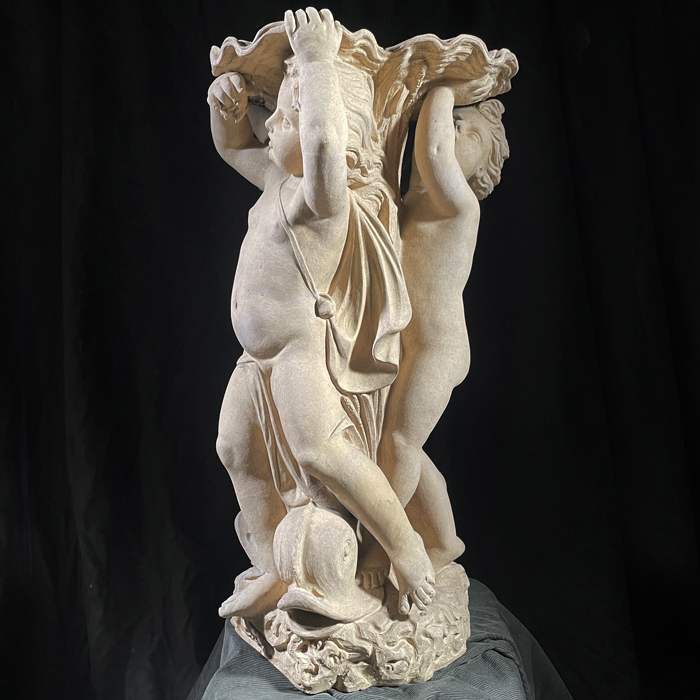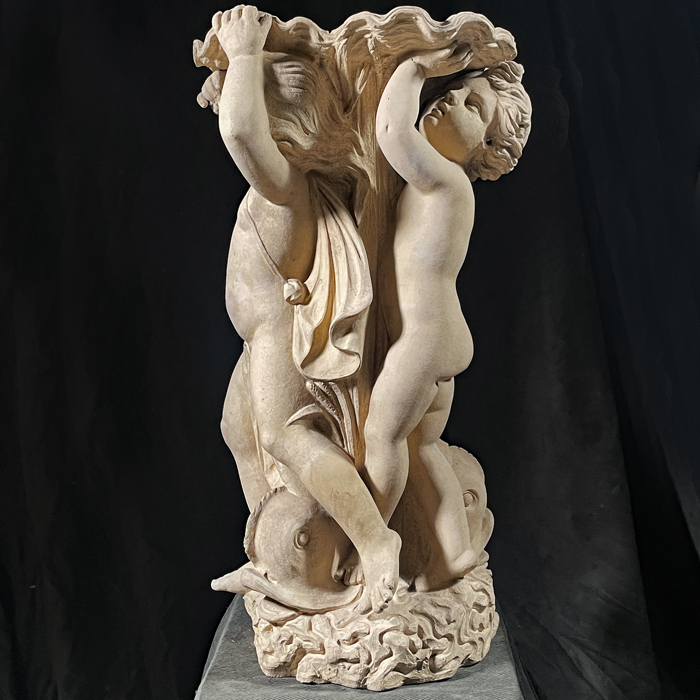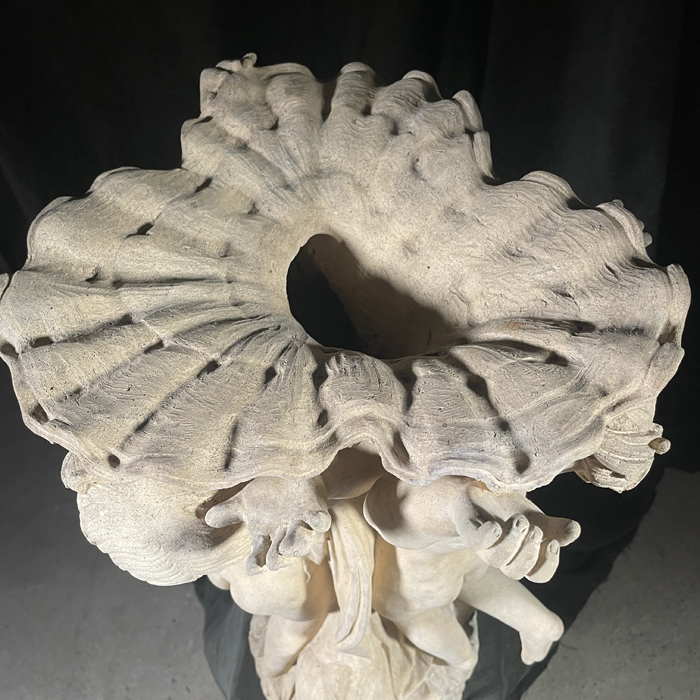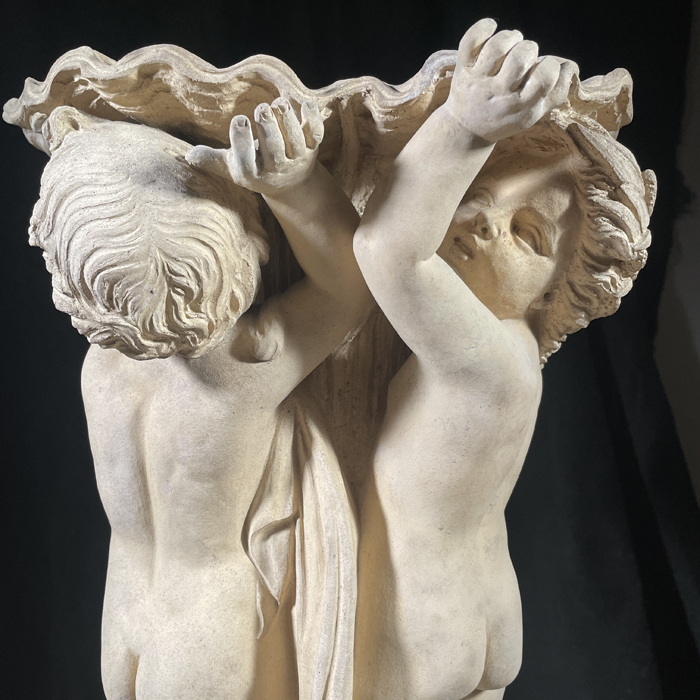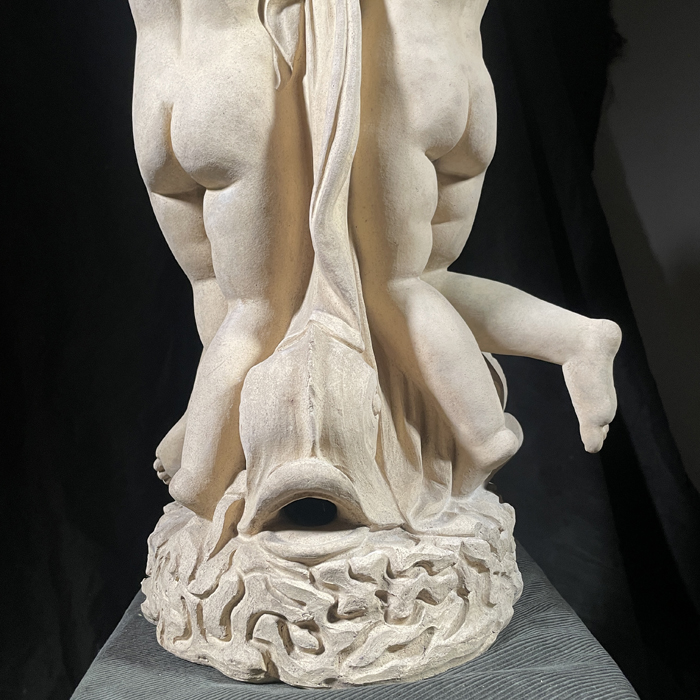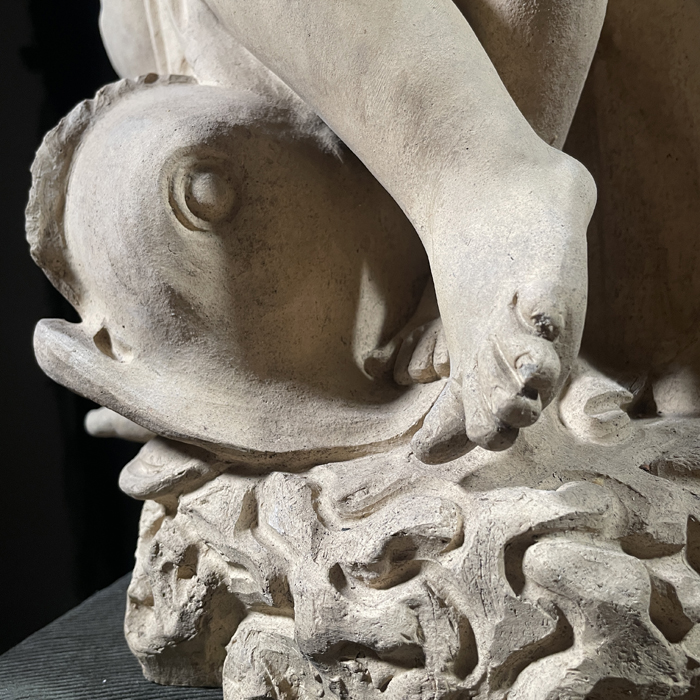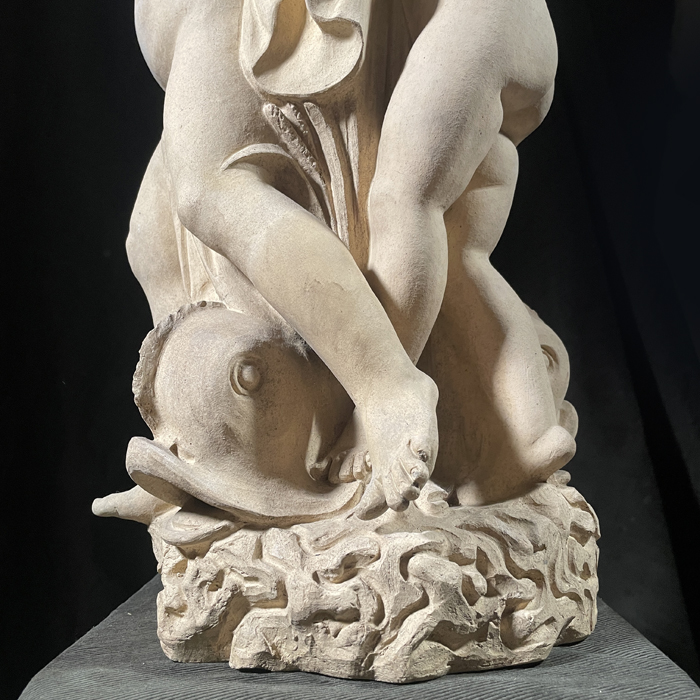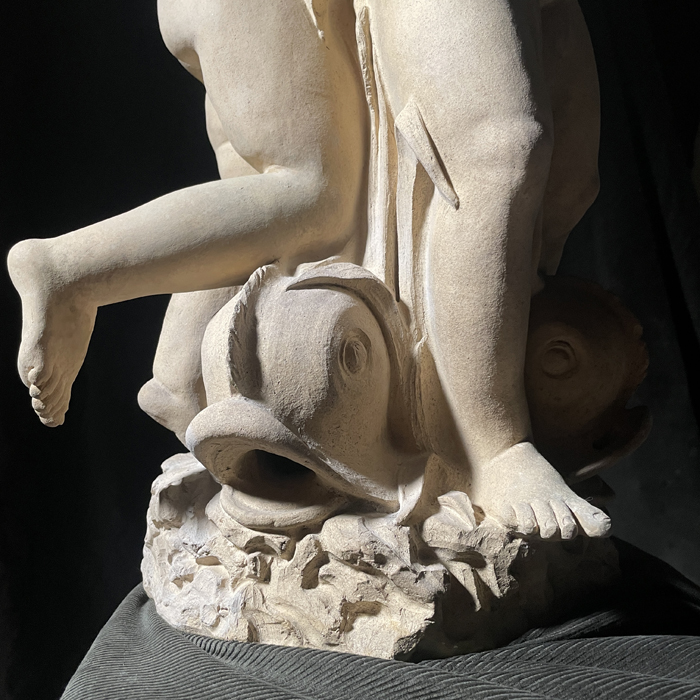A fabulous Victorian stoneware fountain
comprising a group of three putti struggling to support a cornucopia, a trio of dolphins at their feet, raised on a plinth of vermiculated coral,
£7,600
In stock
This is a charming piece, expertly sculpted. The trio of children form a dynamic group that sends the viewer around the piece to see their faces – it is a work conceived fully in-the-round. Their feet are intertwined with the fishes as they slip on the coral plinth in their effort to hold up the funnel-shaped cornucopia as, when plumbed-in as a fountain, water pours down around them. (The sculpture is hollow from top to bottom in order it can be plumbed for a fountain; the fish mouths can serve as subsidiary spouts).
We can’t find other examples of this model – possibly because if they were generally installed as fountains they would have inevitably succumbed to weathering and deterioration despite the hardwearing material. The sculpture isn’t stamped and nor does it appear in Blashfield’s catalogue of 1871 but the calibre of the sculpting, the nature of the fired stoneware and the subject matter all points to his workshop. Furthermore it could be conjectured that the sculpture was by John Bell who worked for Blashfield following The Great Exhibition. Bell did fountains – he made another fountain for Blashfield: the famous”Triton” at the front of The Radcliffe Infirmary, Oxford.
John Marriot Blashfield 1811-82
Blashfield was an entrepreneurial businessman whose eventful and inventive career included the manufacture of wonderful stoneware garden ornament. Blashfield had started out in the manufacture of terracotta, scagliola and cement mosaic pavements. He operated from a sizeable yard on the Isle of Dogs – an extant business he had bought-out in the 1840’s.
He was long associated with, and influenced by, Owen Jones. He continued to diversify the factory’s output and, being familiar with the last years of Eleanor Coade’s business up-river, looked to prevail on the growing market for stoneware garden ornament. By the time of the Great Exhibition, he had a showroom in Praed St in Paddington. Having seen Mark Blanchard’s wares at the Exhibition he was further encouraged. It lead to the commission for Blashfields to create the set of colossal statues by John Bell for the Crystal Palace when it was repositioned on Sydenham Hill in 1854 (later destroyed in the fire).
Blashfield had got his fingers burned in the 1840’s having taken on the development of properties at Kensington Palace Gardens: his property company went bust. But the terracotta works prospered. He published a number of catalogues, illustrating his wares, through the 1850’s and was employing dozens of men.
In 1859 Blashfield made a big move – he took the entire manufacturing business from the Isle of Dogs, north to Stamford in Lincolnshire in order to be proximate to the best clays that he needed for his kilns. He had bought Grant’s Iron-works that had a wharf on the River Welland.
Whilst the relocation seems to have paid-off, in the 1860’s Blashfield over-stretched himself with attempts to expand his markets into the United States. The costs of shipping made the operation unprofitable and continual breakages were delaying payments – notably for architectural embellishments for new Museum of Fine Arts in Boston. The Stamford Terracotta Company – as it was then known – collapsed in 1874. Blashfield declared bankruptcy in 1878.

